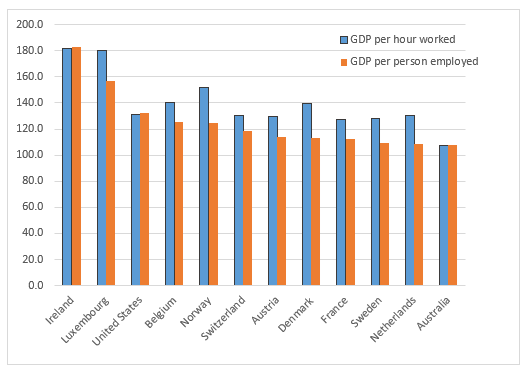Summary
- Reducing work hours without cutting salaries could help companies prepare for the future and speed up the return to normalcy.
- BCG (Boston Consulting Group) survey shows workers wanting to get back to their physical offices as restrictions eases, but they would be happier to be in office for 2-3 days out of 5-day workweek, to avoid commuting.
- NZ PM Jacinda Ardern has suggested 4-day work week would help domestic tourism as flexible timings will leave more time with New Zealanders.
- Experts suggest 4-day work week can boost productivity amongst employees and improve work-life balance.
- However, some business groups believe that 4-day work structure can increase the cost of labour and cannot be adopted by all occupations.
As economies reopen and second wave of coronavirus risk looms ahead, many policy experts and public health officials have warned that rushing it could result in the rise of number of cases. They further suggested employers to adopt measures like social distancing by implementing new technology, installing temperature checks in offices, redesigning office space to maintain physical distance and change in work schedules, as well as the number of employees to make the office less crowded.
Apart from this, there are numerous discussions taking place on reducing the number of hours worked without cutting salaries, which can help businesses return to its regular from and help them in preparing for the future. Several large and small businesses have applied a 4-day week or 6-hour days without cutting pay in recent years. They are implementing new practices and using new tools to meet the challenge of doing 5-day work in 4 days.
NZ suggests 4-day work week
The ‘short work week’ concept has been gaining some momentum after COVID-19 altered the way people work, which involves work hour flexibility and work from home. Coronavirus has shown that people can work in distinct work settings, and there is no requirement for a supervisor to make employees finish their work.
Some experts recommend that employers can consider another type of 4-day work week that permits employees to work for lesser hours but are paid the same weekly salary. They stated that the structure could result in much higher productivity and improve the work-life balance of employees.
The concept of 4-day work week gained momentum after NZ PM Jacinda Ardern favoured the idea and stated that it would help domestic tourism because flexible hours would mean more time for people to travel within their country.
ALSO READ: New Zealand is promoting domestic travel, PM encourages short workweek
A survey of businesses (conducted last year with more than 500 companies and 2k workforce in the nation) including those having 4-day work week by the UK university showed that the firms who have adopted the 4-day work week concept, about two-third had reported progress in staff productivity. In contrast, nearly three quarters of staff was happier, less stressed and had gone on fewer holidays.
As per OECD statistics, labour productivity is not certainly linked to more extended hours.

Source: OECD
However, some businesses feel that such a structure can increase the cost of labour and cannot be adopted by all occupations. The firms think that the shift from 5-day work week to 4 would benefit non-routine, social and high-value tasks that will gain from healthier, more stable, and motivated employees.
Australian workers want hybrid jobs post COVID-19
Most workers in Australia want to come back to their physical office space after coronavirus restrictions have been relaxed, as per a study conducted by BCG (Boston Consulting Group). However, people want to be in the office for 2-3 days instead of 5 days to reduce their travel time. The survey revealed that older workers above the age of 60 were more satisfied by working remotely. The survey covered more than 1,000 workers, half of whom had infused some degree of remote working in their routine before coronavirus.
3 key reasons workers want to return to office as per the survey were for:
- Casual social interactions, which involve catching up with colleagues, having conversations at pantry, etc.
- Formal collaboration that includes working more efficiently in tight groups on specific tasks.
- Office environment as office spaces provides fewer distractions and better technology than working at home.
Chris Mattey, partner at BCG (Boston Consulting Group), stated that such needs could increase the demand for smaller workspaces around cities like collaboration hubs that entails less travel time while providing a trouble-free environment. He added that there is an unusual desire of employees to take control of their work-life amid the coronavirus pandemic, and people would be more careful with their time now.
Tech titans shifting towards flexible working
In 2019, Microsoft Japan trialled a 4-day work week for whole month of August and found out that sales rose by nearly 40%. It was considered successful in terms of employee feedback exercise and productivity.
HR experts have applauded shorter workweeks and work from home as a suitable substitute to a bulk return to offices. They feel that employers must learn how to employ flexible working hours which would be a huge fight won for human resource management. This would also allow the work-life balance to the people who actually need it like part-time students, new mothers and parents who take care of the elderly and kids.
While Facebook and Google have plans to extend work from home until 2020, Mastercard is looking to consolidate some of its offices. There is an increasing shift towards work from home and more flexible working schedules aided by easily accessible technology and video-conferencing platforms like ZOOM, Microsoft Teams, etc. Such working patterns would also add to reducing traffic and ensure adherence to social distancing.
A shorter work week not only help companies to be more productive, but also attract better talent. This can also encourage companies to become more efficient by reducing time spent in meetings, promote automation of repetitive tasks to reduce time and invest more in online software lowering the need for physical contact with workers.




